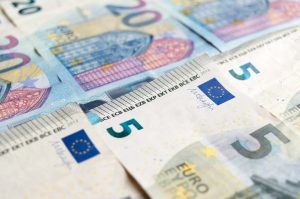Forex trading is a popular and lucrative investment option that involves buying and selling currencies. Profits in forex trading are calculated by determining the difference between the buying and selling prices of a currency pair. This difference is known as the spread, and the profit is the amount that a trader earns after deducting the spread and any other trading costs, such as commissions or fees.
To understand how profit is calculated in forex trading, it is important to first understand how currency pairs are quoted. In forex trading, currencies are always quoted in pairs, with the first currency being the base currency and the second currency being the quote currency. The exchange rate between the two currencies is expressed as the amount of quote currency required to purchase one unit of the base currency.
For example, if the exchange rate between the US dollar (USD) and the euro (EUR) is 1.20, this means that it takes 1.20 euros to buy one US dollar. In this example, the USD is the base currency, and the EUR is the quote currency. When trading forex, a trader will buy or sell a currency pair based on their expectation of how the exchange rate will change in the future.
To calculate profit in forex trading, a trader must first determine the size of their position or the amount of currency they are buying or selling. This is measured in lots, with each lot representing a standard size of 100,000 units of the base currency. Traders can also trade in mini lots (10,000 units) or micro lots (1,000 units).
Once the trader has determined the size of their position, they can then calculate the pip value of the currency pair. A pip is the smallest unit of measurement in forex trading and represents the fourth decimal place in most currency pairs. For example, if the exchange rate between the USD and the EUR is 1.2050, a change in the exchange rate to 1.2051 would represent a one pip movement.
The pip value of a currency pair is determined by multiplying the position size by the pip value of the currency pair. For example, if a trader has a position size of one standard lot in the USD/EUR currency pair, and the pip value is $10, the total pip value of their position would be $10 x 100,000 = $1,000.
Once the trader has determined the pip value of their position, they can then calculate their profit or loss. If the trader buys a currency pair and the exchange rate increases, they will make a profit. If they sell a currency pair and the exchange rate decreases, they will also make a profit. However, if the opposite occurs, and the exchange rate moves against the trader’s position, they will incur a loss.
To calculate profit or loss, the trader must first determine the number of pips gained or lost. This is done by subtracting the entry price from the exit price of the currency pair. For example, if a trader bought the USD/EUR currency pair at 1.2050 and sold it at 1.2060, they would have gained 10 pips.
The profit or loss of the trade is then calculated by multiplying the number of pips gained or lost by the pip value of the currency pair. For example, if the pip value of the USD/EUR currency pair is $10, and the trader gained 10 pips, their profit would be $10 x 10 pips = $100. If the trader lost 10 pips, their loss would be $10 x 10 pips = $100.
In addition to calculating the profit or loss of a trade, traders must also account for any trading costs, such as spreads, commissions, or fees. These costs are deducted from the profit or added to the loss, depending on the broker’s fee structure.
In conclusion, calculating profit in forex trading involves determining the size of the position, calculating the pip value of the currency pair, and then calculating the profit or loss based on the number of pips gained or lost. Trading costs must also be taken into account when calculating profit. By understanding the mechanics of how profit is calculated in forex trading, traders can make informed decisions and manage their risk effectively.






